What happens when the Rio Grande dries up? The river is often overshadowed, at least in the US, by the Colorado River. But the Rio Grande creates the border between US and Mexico, and the water that flows through it is at the center of a looming geopolitical crisis. So what happens when towns, farms and cities on both sides of the border start to run out of water?
Guests:
- Naveena Sadasivam: staff writer at the Texas Observer covering the environment, energy and climate and co-author on the series Shallow Waters
- Zoë Schlanger: staff writer at Quartz covering the environment, and co-author on the series Shallow Waters
- Flavio Lehner: Climate scientist at the National Center for Atmospheric Research
- Alfredo Rodríguez-Pineda: Water program coordinator at the WWF
Further Reading:
- Shallow Waters: In a warming world, the fight for water can push nations apart—or bring them together
- Shallow Waters: The US-Mexico border wall’s dangerous, costly side-effect: enormous floods
- Shallow Waters: Trump’s border wall could decimate these rare species
- Shallow Waters: There’s a time bomb for US-Mexico relations ticking underground
- Shallow Waters: One of the fastest-growing regions of the US could run out of water
- Shallow Waters: How Anglo farmers brought an end to Latino ranching in the Rio Grande Valley
- Shallow Waters: North America hasn’t had a megadrought in recorded history. It could be overdue
- Shallow Waters: Dams and reservoirs can’t save us. This is the new future of water infrastructure.
- Shallow Waters: A major US city will start drinking its own sewage. Others need to follow.
- Climate Change on the Rio Grande
- Assessing climate change impacts on water availability of snowmelt-dominated basins of the Upper Rio Grande basin
- Assessing recent declines in Upper Rio Grande runoff efficiency from a paleoclimate perspective
- Lower Rio Grande Basin Study
- Rain-Fed Farms: Harnessing the Power of Precipitation
- The Rio Chonchos: A Preliminary Overview
- Possible Scenarios of Impacts of Climatic Change on Potential Evapotranspiration in the Watershed of the Conchos River, Mexico
- Integrated river basin management in the Conchos River basin, Mexico: A case
- study of freshwater climate change adaptation
And here’s a video of Willie the Water Drop, the El Paso water mascot:
Flash Forward is produced by me, Rose Eveleth. The intro music is by Asura and the outtro music is by Hussalonia. The episode art is by Matt Lubchansky.
If you want to suggest a future we should take on, send us a note on Twitter, Facebook or by email at info@flashforwardpod.com. We love hearing your ideas! And if you think you’ve spotted one of the little references I’ve hidden in the episode, email us there too. If you’re right, I’ll send you something cool.
And if you want to support the show, there are a few ways you can do that too! Head to www.flashforwardpod.com/support for more about how to give. But if that’s not in the cards for you, you can head to iTunes and leave us a nice review or just tell your friends about us. Those things really do help.
That’s all for this future, come back next time and we’ll travel to a new one.
FULL TRANSCRIPT BELOW
▹▹ ▹▹ ▹▹ ▹▹ ▹▹ ▹▹ ▹▹ ▹▹ ▹▹ ▹▹ ▹▹ ▹▹ ▹▹ ▹▹ ▹▹ ▹▹ ▹▹ ▹▹ ▹▹ ▹▹ ▹▹ ▹▹ ▹▹
Hello and welcome to Flash Forward! I’m Rose and I’m your host. Flash Forward is a show about the future. Every episode we take on a specific possible… or not so possible future scenario. We always start with a little field trip to the future, to check out what’s going on, and then we teleport back to today to talk to experts about how that world we just heard might really go down. Got it? Great!
This episode we’re starting in the year 2060.
***
[news music]
News Announcer: Today is a world water day but you wouldn’t know that in many parts of theU.S. The drought in the nation’s midsection is entering its third year and more hotter and drier weather is expected this spring. Now one of the hardest hit states is expected to be Texas where rice farmers who need a lot of water for their crops are feeling high and dry.
News Announcer: Texas in a water emergency. And with its economy now threatened taking desperate measures.
News Announcer: Texas officials today had bad news for farmers who badly need water.
News Announcer: Rice has been grown here since the 1800’s, but few years have been as dry as the last two.
Farmer: We’ve been in production since 1947, I’ve never seen anything like this. I’ve never seen a point where we didn’t have water enough to plant rice in Texas.
News Announcer: Rainfall in Texas is more than 16 inches below normal rice production statewide has dropped 37 percent.
News Announcer: We’re back with a story of desperate days in Texas where the drought has become so critical that some towns could run out of drinking water in the next 90 days.
News Announcer: The latest drought monitor shows Texas bone dry, 90 percent of the state is in drought. To date 11 public water systems could run out of water in the next 45 days.
News Announcer: This could be the new normal. The current Texas drought started four years ago and experts say it’s among the worst of the past five hundred years.
News Announcer: The drought in Texas is already in the record books and some forecasters say it may last until next summer. It has cost farmers more than five billion dollars in lost farm. Farmers. More than five billion dollars in losses.
Farmer: A year, year and a half ago where the pickup truck was water, shoreline.
News Announcer: Everything from there to here was water.
Farmer: Was water, yes.
News Announcer: I’m walking across the dry portion of a reservoir that should be submerged in water. With me is John Jacobs the proud mayor of Robert Lee Texas. His family has been on these rugged and windy west Texas plains since the Civil War. We drove up to a vista overlooking the reservoir that was built after the last mega drought in the 1950s. What two summers have done to this region became strikingly clear.
So this is E.V. Spence Lake?
Farmer: This is E.V. Spence reservoir, yeah.
News Announcer: Or what’s left of it
Farmer: What’s left.
News Announcer: If the reserves deplete at current levels this town will run out of water by the end of March.
News Announcer: The effects are rippling through the economy. Car washes can operate only five days a week. Jobs may be on the line.
Farmer: It’s a challenge for us to find a way to remain viable and profitable during this time.
News Announcer: It’s come to this: they’re praying for rain.
Local journalist: For several weeks in I ended my stories about the water problems with, please continue to pray for rain. Is trying to put a positive note on a very negative situation I guess.
[news music]
Rose: Okay so today we’re finally, finally, tackling climate change. I have, quite frankly, kind of been putting this off. It’s really hard to do climate change on this show, because it’s… a huge topic. Flash Forward episodes work best when I can say “this is a future in which blank specific thing happens.” And with climate change, there are just so many things that can and will happen in so many places in the world, and it just seemed impossible to cover. Plus, most of you know that climate change is happening, you know that it’s bad, what can I tell you that will be interesting and surprising and useful to you?
But climate change is also probably the most pressing future I could possibly tackle on this show. It’s the one that is definitely happening, and the one that will probably impact you personally the most compared to any other future I’ve done on this show.
So, today, we are finally doing a climate change episode. We’re not going to talk about the whole world, that’s impossible. And we’re actually not going to talk about the recent IPCC report, which basically said that while it’s technically possible for us to curb warming to just 1.5 degrees Celsius, it’s almost certainly not going to happen for political reasons. We’re also not going to focus on what that report predicted would happen if, or really… when… we fail to limit warming to 1.5 degrees.
Instead, today, we’re going focus on a really specific region of the world that is already seeing the effects of climate change.
Naveena Sadasivam: So the Rio Grande originates from set of mountains in Colorado. And it works its way south through New Mexico, and then all the way down into Texas, sort of moving in the south eastern direction. And then, along Texas and Mexico, it forms the southern border of the U.S.
Rose: This is Naveena Sadasivam, a reporter at the Texas Observer. Naveena recently wrote a series of pieces about climate change, water, and the border along the Rio Grande in collaboration with Zoe Schlanger, at Quartz. Here’s Zoe.
Zoe Schlanger: And in total, on both sides, there 6 million people that drink from the Rio Grande; that’s their primary source of drinking water. And then there’s another 2 million acres of farmland on both sides that is exclusively using Rio Grande water. So it’s a lot of people.
Rose: The Rio Grande — or Rio Grande, depending on where you are — is a really interesting case study, not just in climate change and water needs, but also in the ways that those things connect to international policy and diplomacy. The US and Mexico both need this water, and they have a treaty that governs who gets how much, which was signed in 1944.
Naveena: And I won’t go into the specifics, just because it gets complicated very, very quickly. The amount of water that we’re getting from the Rio Grande; about a third of it is allocated to the U.S., and two thirds of it stays for Mexican uses. And the reason it’s split that way is because we are allocated a bigger share of the Colorado River’s water; where we also have a sharing agreement with Mexico.
Rose: The Rio Grande is crucial for farmers, industries and cities on both sides of the US Mexico border for over 1,000 miles. If it dries up, people on both sides of the border suffer. And it’s actually not hard to figure out what the immediate effects of a dry river might look like, because we’ve already seen the impact of drought in the region. In fact, in 2013, things got really bad in the Rio Grande valley.
Naveena: To kind of understand that, we’ve got to go a little bit further back in time, to about 2010, 2011, which was the beginning of a pretty prolonged drought here in Texas. And so, by the time 2013 rolled around, the river was pretty close to dry as you can get.
Rose: You actually already heard all about this. The intro scene for today’s episode, was completely constructed from news clips about the 2013 Texas drought.
Naveena: The water levels were so low that there were some cities that were concerned that they might be running out of water.
Rose: Many towns in Southern Texas, including some of the ones you heard about in that intro, are especially susceptible to running out of water, because of the way water moves from the Rio Grande, inland.
Naveena: So back in the 1920s, 30s, these canals were dug from the river. Fifty, sixty, seventy, miles inland to transport water to farms and cities that were cropping up much farther inland.
Rose: These canals that carry water are often totally unlined and uncovered. So, as the water moves through the canals it seeps into the ground. And if it’s hot, like it was in 2013, as much as ⅔ of it can evaporate.
Naveena: So in the case of this one city, Raymondville, it’s about thirty miles inland, but the canal system sort of snaked their way up. And it’s about fifty six miles of canals from the river to the city’s water treatment system. And even though the city had rights to water on the river – they technically had a legal right to it – what would happen is that by the time the water would snake through this canal systems and reach the city, all of it would have either evaporated or seeped into the soil. So, in effect, they just could not get any water from the river.
Rose: Most of the places impacted by this problem are small, towns with 5,000, 10,000 people in. And in 2013, they were all facing the same issue. They were ]about month away from completely running out of water.
Naveena: The governor at that time, Rick Perry, was writing letters to the president, urging him to take action, to talk to Mexico to have them release more water. It was a fairly stressful and chaotic time.
Rose: It was honestly just luck that saved them.
Naveena: Luckily, just before day zero there were monsoon rains that came through. and the rainfall sort of replenished the main stem of the Rio Grande, and also some of the tributaries on the Mexican side, which improved flows into the river. And so the river levels went up, and they didn’t actually face that kind of dire situation where they completely ran out of water.
Rose: So, in 2013, the towns did not run out of water. But there were huge impacts regardless. The drought also came with wildfires that caused over $3 billion dollars in losses. Texas A&M estimates that farmers lost over $7 billion dollars because of the drought. And thanks to climate change, this is only going to get worse.
Naveena: The head waters from Colorado – the snow melt that feeds the river – that is declining. The snow is melting earlier and earlier in the year, as temperatures rise. I think one of the most recent studies found that the snow melt in the Colorado mountains that feed the Rio Grande had decreased by 25 percent already.
Rose: In 2013, the federal Bureau of Reclamation put out a report about the future of the Rio Grande. And the future outlined in the report is bleak.
Naveena: They said it would be a staggering water supply shortage.
Rose: Based on the changes in land use, and the rising water demand, the report predicted that in just forty years, there would already be huge water shortages.
Naveena: About 600,000 acre feet of water would not be available by 2060.
Rose: What, the heck, is an acre foot you ask? Great question. An acre foot of water is an acre of space, filled with water a foot high.
Naveena: One acre feet is about 325,000 gallons. So 600,000 acre feet is a lot, a lot, a lot of water.
Rose: Basically this means that by 2060, a full third of the region’s water needs will go unmet.
Naveena: And that’s not even considering climate change. That’s just supply and demand.
Rose: Oh great!
Naveena: If you take climate change into account that’s an additional 86,000 acre feet of shortage that is anticipated.
Flavio Lehner: Sometimes we refer to the Rio Grande as sort of the canary in the coal mine
Rose: This is Flavio Lehner, a scientist at the National Center for Atmospheric Research in Boulder Colorado. The Colorado River gets more attention in the US than the Rio Grande does, because it’s bigger and because the US gets more of its water. But the two are deeply connected; they’re both rivers that supply water to huge numbers of people. And they both run through dry areas.
Flavio: I think the Rio Grande is an excellent sort of a case study, because I feel like a lot of the effects of climate change that we might expect might manifest earlier on that system than on the Colorado River system.
Rose: Last year, Flavio and a team of scientists published a paper trying to understand recent droughts and declines in runoff in the Rio Grande using climate models.
The Rio Grande is what scientists call a snowmelt dominated river. Most of the water comes from snow that melts… that was probably obvious to you. But not all rivers behave the same way. One of the key things you want to know about a river, especially if you are a water manager, is its runoff ratio, or runoff efficiency. Basically, this is how much water you actually get in the river given the amount of precipitation at the source — so in the case of the Rio Grande, what percent of the snow that falls in the Rocky Mountains actually makes it into the river.
Flavio: In dry regions, you are going to lose a lot of your precipitation to groundwater infiltration and evaporation before it actually makes it into the river.
Rose: So rivers like the Rio Grande and the Colorado are inefficient rivers, because so much of the original precipitation that feeds them doesn’t actually wind up flowing through the river itself. Waterways in the Northeast, on the other hand, where it’s not as hot and dry, are far more efficient. Knowing a river’s runoff ratio is really important for water managers.
Flavio: So, each year people sort of want to know how much water they can expect in summer, melting off from the snow that fell in winter. So at the beginning of the year, January, February, March through May, we’re making forecasts of how much water there will be in the river.
Rose: The problem is that in the last thirty years, the conditions in the Rio Grande Basin have gone from pretty wet, to really dry. But what scientists weren’t sure about, was whether this big shift in the last thirty years was really unusual, or just part of a normal fluctuation over longer periods of time. So, to find out, Flavio and his collaborators turned to trees.
Flavio: And so, what you can do is you can go out and core these trees. So, you don’t have to chop them down or anything. They go on to live a happy life. But we take a very thin core into the tree, and pull out this piece of wood and it looks pretty much like a straw. It’s about the size of a straw, in terms of its diameter and length. And then you pull that out and you can actually see the tree rings. And so, you can measure how thick they were and how thin they were in a given year in the past.
Rose: And by looking at these tree rings you can get a sense for how much water was flowing in the river, because if a tree gets plenty of water it is going to grow more than if it got no water at all. Then, Flavio and his collaborators combined that tree ring data with data about nearby precipitation. So, they knew how much it had snowed, and they knew how much water the trees had gotten. And from that, they were able to get a really clear picture of the runoff ratio in the Rio Grande basin over the past 445 years.
Flavio: So if you look over this thirty year period, you really see this very strong trend from a wet period to a very dry period. It’s a pretty exceptional trend.
Rose: This might not surprise you, given the fact that we’re seeing exceptional climate related trends all over, but it is important to have data! And they found that yes, this thirty year swing from wet to dry is indeed exception. The trend is exceptional enough that it has really messed with people’s ability to predict the runoff ratio of the river, how much water will wind up in the river given the precipitation.
Flavio: That’s very similar to when you are leaving your house in the morning, you go to work, and you looked at the weather forecast and you know it said like, “oh it’s going to be sunny out.” And so you’re not bringing an umbrella. And then in the afternoon, sure enough, it rains and you’re like, “oh my god, if I only have known.”
Rose: Except, instead of you getting wet on your way to get an overpriced salad for lunch because you’re trying to eat healthy this week, you’ve misallocated water for an entire region. Oh, oops!
You can’t really use the model in this study that Flavio did to predict the impact of future changes in the climate, but one thing it did confirm was that hotter years do indeed make for less efficient rivers. Again, this seems obvious but it’s always good to have scientific data to point to. So on a hot year, when temperatures are above normal, you are three times more likely to have low water levels in the river.
Flavio: And so, the combination of those two things actually allows us to say, with a reasonable amount of certainty, that you can expect the decline in stream flow as the climate keeps warming, for that system.
Rose: A decline in streamflow means less water, in general, in the river. And hotter years also mean that those really inefficient, unlined channels that bring water from the river up into Texas are also going to be less efficient. The end result is less and less and less water available.
So what happens when the Rio Grande does get drier, and drier. When towns in Texas and Arizona and Mexico do actually run out of water? Does the US go to war with Mexico over water? Does the drought change what we eat? And what are people doing now to try and prevent the worst impacts of this looming water scarcity?
All that and more, after this quick break.
[[BREAK]]
So we know that water is going to become even more scarce in the Rio Grande valley. And we know that a lot of people rely on that water, on both sides of the border. So what happens when towns really do start running out of water?
The classic answer, the one that you might be thinking, is war. We go to war for water. There are loads of fictional stories about this. You might have even heard people say that future wars will be fought over water, not oil. But the historical record actually doesn’t bear that out.
Zoe: So this was surprising to me, too. The most compelling research I found on this was from a guy named Aaron Wolf, who teaches at Oregon State University.
Rose: This is Zoe Schlanger again, who worked with Naveena on that big reporting package about the Rio Grande and climate change.
Zoe: He he basically compiled tens of thousands of water events; any time there was international water under dispute, or anything like that
Rose: And what he found was that most of the time, there wasn’t a bloody war over water.
Zoe: He could not find, in the historical record, any instance of bloodshed – actual military… you know, true war where people died – happening over water since 2500 B.C. And that was, we’re talking about two Sumerian cities going to battle over a river.
Rose: Instead, nations that came into conflict over water, mostly worked it out.
Zoe: Out of all of those events, about two thirds were collaborative. About a third involved some kind of conflict, but the vast majority involved a lot of collaboration.
Rose: This has been the case with the US and Mexico, too. Even in 2013, when tensions got really bad between the US and Mexico, officials were able to cooperate and keep things from escalating into a full on conflict. And it’s not just a sort of faceless group of officials doing this, it’s really mostly these two guys.
Zoe: So, Naveena and I went to a water conference in El Paso. And both commissioners of the International Boundary and Water Commission were there; that’s the international group that is responsible for negotiations on water between the U.S. and Mexico And these commissioners are these two guys. And they were in the back of the conference, at the lunch break, just sitting buddy, buddy next to each, other eating brisket and chatting. And I thought that was such a funny picture because you hear about U.S. Mexico relations being mostly tense right now.
Rose: The Mexican commissioner, Roberto Salmón and the US commissioner, Ed Drusina, have been working together on water issues along the border for decades now.
Zoe: Their spouses are friends, they travel together for conferences. They have this kind of established… they talked about asking each other about their grandchildren, and how important it is that they drink whiskey together every so often, and talk about things that aren’t water. Because that personal relationship means that when things do get tense between the two sides of the commission, they’re still able to work through it.
Rose: And it’s worked for them. It’s actually worked so well that these two guys have kind of become the model for water relations between countries that might not otherwise have the best relationship. In fact, Salmón and Drusina were called in to advise another set of countries with a really tense situation, about how to handle their water negotiations.
Zoe: As we all know, the situation between Israel, Palestine and Jordan is not at all…. a peaceful one. It’s an area with tons of conflict. The other issue with that area is that they all three rely on each other for water. They share the Jordan River, they share the Dead Sea and the Red Sea.
Rose: In 2016, Salmón and Drusina flew over to the region to talk to the water commissions from Israel, Palestine and Jordan about what they can do to improve their working relationship.
Zoe: It was pretty funny. They had to have these meetings separately because getting all three of those states, even if it’s just their water commissioners, in one room was pretty much impossible. Salmón and Drusina sat down with each of them and was like, “you guys really need to meet more.” At the time those commissioners were meeting every couple of years, and it was tense, and there was secret meetings because the political situation was so volatile. But he was like, “you really need to just have lunch and get to know each other.”
Rose: Salmón and Drusina were essentially mentoring these officials, trying to show them how they have managed to keep the peace between the US and Mexico even during times of extreme drought and finger pointing about water.
And as the climate changes, and the river gets drier, it will be Salmón and Drusina who continue to keep the peace. Or at least, it would have been. But that all changed earlier this year.
Zoe: While Naveena and I were reporting these stories, kind of right before they published, Drusina’s office got a phone call from the Trump administration saying that he was out.
Rose:In May, Drusina was asked to step down from his position.
Zoe: Which was pretty surprising because this is not really a political… it’s an appointment position, so the president does appoint the IBWC commissioner. But it’s not seen as a flashy position. It’s a technical position. He’s an engineer.
Rose: And this call couldn’t have come at a worse time
Zoe: We saw, this summer, the Rio Grande Valley was plunged right back into drought. So the role of the IBWC was extremely important in dealing with that. And they were kind of on this precipice of coming up with a mutual modeling agreement. So, Mexico and U.S. would use the same data to determine how much each side was supposed to deliver water to the other. Which sounds like it should have been in place forever, and very common sense, but it’s really tough to share data and scientific methods with another country. So that was about to start happening. And then he was pulled out.
Rose: Right now, there is an interim commissioner, but the Trump administration has yet to appoint Drusina’s replacement.
Zoe: The thing about the IBWC is that it’s staffed with lifetime scientists. So someone else has stepped in in the meantime who’s very familiar with the situation, but it’s not the same. You know it’s, it’s not Salmón’s pal. They don’t have that interpersonal relationship that Salmón and Drusina had.
Rose: Meanwhile, there’s a time bomb ticking along the U.S. Mexico border. And it’s not actually the border wall that Trump has proposed. That’s a whole other issue when it comes to water use in the region, which we don’t even have time to get into on this episode. So patrons will get a whole section on that in the newsletter this week. This time bomb is underground.
Zoe: So you have the Rio Grande, which is drying up. Pretty much sure that by 2060 there’s going to be major shortages in the region. And then, when that happens the only water there that’s left will be underground water, its aquifers water.
Rose: Along the US Mexico border there are four well known aquifers.
Zoe: You have this situation where the U.S. has a map of their aquifers. Then the Mexico side has another map of their aquifers, and both maps stop at the border. It’s pretty funny. Researchers call this blank map syndrome. And they don’t line up because they have different ways of measuring things.
Rose: But a researcher at Texas A&M named Rosario Sanchez has been using data collected by farmers and beer companies, along with old oil well maps, to find more. A lot more.
Zoe: Thirty six aquifers. So, you have, federally recognized, four aquifers across the border. They found thirty six.
Rose: There’s already no agreement between the U.S. and Mexico over who owns the rights to those four that they both recognize.
Zoe: This will be, like I said, it’s the only water that’ll be left when the Rio Grande is really a trickle.
Rose: In Texas, there’s a rule called right of capture, which basically says that if you can pump it on your land, it’s yours. And this is a rule that a lot of farmers in Texas use, they have found water on their land, and have the right to use it on their farms.
Zoe: On the Mexico side, you have this system of federal permits. And actually, in northern Mexico, a lot of those go to beer companies. Most of the Mexican beers that we drink in the U.S. are bottled at the northern border region, using this groundwater. So, even though this has been ignored for basically the entire history of Mexico – U.S. relations, the federal government is just starting to realize that this is a critical issue that could turn into a crisis. And they plan to have their very first meeting on it next summer.
Rose: So, we have a drying climate, this basically unregulated lifeline of water underground, and we’ve broken the relationship between the two water commissions by removing the US commissioner. This is not good. Even though we know that bloodshed is unlikely between countries sparring for water, that doesn’t mean things aren’t about to get rough.
Zoe: Well, it probably won’t lead to war, but it won’t lead to more happy feelings between the two countries.
Rose: So what happens next? We know the Rio Grande is going to get more and more dry. We know that drought will hit the region harder and harder every year. And we know that water is going to get even more precious and scarce. We also know that actual bloody war is unlikely, based on the historical record. So… what does happen?
Well, it sort of depends on what we do right now. And there are currently cities on both sides of the border trying to get out ahead of this looming crisis.
Alfredo Rodriguez: Let me tell you my strategy. My strategy is to teach them, especially when I do with farmers. What I do is to explain to them about drought.
Rose: This is Alfredo Rodriguez, he’s a water program coordinator at the World Wildlife Fund, and he works in Northern Mexico along the Rio Conchos.
Alfredo: Which is the main tributary for the Rio Grande.
Rose: Just like Southern Texas, Northern Mexico is going to get drier and drier. And Alfredo spends a lot of his time talking to farmers in northern Mexico about how they can change their farming practices to get ready for these looming droughts.
Alfredo: When you say climate change, everybody has heard about it. And they think about fifty to one hundred years; who cares about that? But when you say drought, they listen more to what I am saying. The know the effects of drought. They have been living with drought all of their lives. So they understand what drought means. And then, when I saw we need you guys to adapt to the next drought, it is exactly the same thing as adapting to climate change. It’s exactly the same.
Rose: One of the key things he’s trying to get farmers to do, is stop planting their crops in neat, straight rows. And instead plant them in something called a keyline.
Alfredo: The keyline is something similar to working with the lines; the crop lines must follow the topographic terrain in order to maintain the water level at the same level all over the crop.
Rose: By planting crops along the topography, farmers can catch and keep as much rainfall as possible. Using the keyline system Alfredo and his team have seen 50% increases in yields on some farms. But it’s still hard to get farmers to change their ways.
Alfredo: They have been using their techniques, using straight lines. And they are very tough to change that practice. It has not been easy to show them the benefits of keyline, for example.
Rose: And the keyline system is important not just to increase yield, but also to decrease erosion.
Alfredo: Keeping the soil; the soil is the most important resource that they have, right there in their plot.
Rose: Erosion can slowly destroy farms, by stripping away all the nutrients and cutting down on the land’s ability to retain water.
The WWF is also working on getting small farmers together, so that they can apply for infrastructure grants that benefit multiple farms instead of all working on the problem alone. They’re also trying to implement systems that push water into aquifers instead of storing them in dams.
Alfredo: Water storage in dams evaporate quite fast. With climate change, such an evaporation rate is going to increase.
Rose: On the U.S. side of the border, cities like El Paso are leading the way by building desalination plants and sewage reclamation facilities.
Zoe: So, El Paso is one of the driest cities anywhere. It’s drier than the driest city in sub-Saharan Africa, which is Windhoek, Namibia. So, El Paso is working with nine inches of water a year, which is basically nothing.
Rose: In the 1970’s and 1980’s, El Paso was a city full of green lawns and tons of wasted water. But they pretty quickly realized that this was totally unsustainable, and started working on building water conservation and reuse systems. Which means that they have a head start on tons of cities that are now realizing that they have a water problem.
Zoe: And they are now seen as the forefront of water technology, and they have visitors coming from; most recently Singapore, Myanmar, and China have all come to see what they’re doing about their water shortage issues.
Rose: One of the big projects El Paso is working on right now is something scientists call direct potable reuse.
Zoe: I guess that’s better than saying purified sewage water. A couple of years ago, El Paso decided to go full force into what some people called a toilet to tap.
Rose: Now, El Paso already has a system in place for reusing sewage water.
Zoe: They reclaim the sewage, they clean it. Then they put it into percolation basins, and let it percolate into the ground. And that process takes a while, and it purifies it a little further, and people don’t have to think about that water going directly into their taps.
Rose: But now, they want to cut out that middle step, and have the purified water go straight from the reclamation facility into the water supply. And if you are sitting there thinking… nope. Nope. No thank you. I would not like to drink reclaimed sewage water, you’re not alone. Here’s a clip from 2013, when the town of Big Spring, Texas started building their own toilet to tap system.
News Report on Wastewater Treatment Plant
Ed Lavandera: The treated raw sewage water will be mixed with lake water and treated again. Three times in all.
Benito Lara, Big Spring Resident: I’ll never drink it
Lavandera: But the idea still doesn’t taste right to a lot of people, like Benito Lara.
Lara: That’s not a good idea at all.
Lavadera: You don’t like it?
Lara: No. If they do we going to have to leave town.
Lavandera: Really?
Lara: Yeah. That’s too much.
Lavandera: Are you kind of the salesman for this plan.
John Grant: Somebody has to be.
Lavandera: When you hear people say, “oh my god, these people are going to be drinking their own urine….”
Grant: There was a fella over in Midland that I heard made a comment that said, “At least he gets to drink his beer twice, now.”
Rose: But El Paso, again, has had a head start here.
Zoe: El Paso has been kind of priming their population since the 80s to accept that they’ll eventually have to drink their sewage.
Rose: This program included a mascot named Willie the Water Drop.
Zoe: Which is basically this velour wrapped Humpty Dumpty, it’s quite terrifying. But it goes to all of the local schools, and teaches children that they live in a desert, and they have to recycle their water in their home, and use less, and all these things.
From El Paso Water informational video (https://www.youtube.com/watch?v=-05xYCmPjr4):
Narrator: WIth a little bit of education, anybody can learn. Just ask this guy, Willlie. He first came to life as Willie the Water Waster. But, he had a conservation conversion. Now, he’s El Paso Water Utilities’ water conservation mascot, Willie the Water Drop.
Teacher: Hey, can everyody say, “hi Willie”? One… two… three….
Children: Hi Willie!
Narrator: WIllie travels to local school groups, churches and community organizations. He and EPWU staff explain the little ways we can all make a big difference.
Teacher: What do you think Willie’s favorite word is?
Children: Water
Teacher: Water, right. Water starts with a “W”. What does Willie not want you to do with water that starts with a “W”?
Children: Waste it.
Teacher: No, he does not want you to waste it.
Rose: And all of this worked, people in El Paso are ready to drink their sewage
Zoe: Eighty nine percent of the people that pay for water, that were polled by the water utilities, said that they would be happy to drink treated sewage water. Which is amazing.
Rose: El Paso is a good case study here, not just because of its success, but also because it shows that this takes a long time. They started working in this in the 1980’s, and it’s going to take another 10 years for this toilet to tap system to be fully online. Building these systems is expensive and takes a lot of, not just building time, but political time to get the money and local support. In places that haven’t even begun thinking about water reclamation and reuse, things are probably going to get pretty dire.
Zoe: I’m sure we’ll see certain places have to reassess their sustainability as a town, because this just takes so long and so much money. Especially if you have a small populationl just the upstart costs of a facility like this are just enormous, really.
Rose: Because of the way that water is allocated, cities will probably be fine. But small towns and farms are going to have a really rough time. Farmers will likely stop growing really water intensive crops like rice in Texas, and focus on things that are less water hungry.
Naveena: Cotton, for instance, is a very water intensive crop. Alfalfa is very water intensive. Citrus – the valley’s really known for grapefruit, oranges and all kinds of citrus so those are also fairly water intensive.
Rose: That’s Naveena again.
Naveena: More vegetables perhaps because there are quite a few vegetables grown in the valley; onions or potatoes, for instance. The sugar cane industries is fairly big there, and so they do get some of the sugar production from sugar beets.
Rose: Crops that rely solely on rain, which Alfredo calls rain crops, might just go away entirely.
Alfredo: The irrigation sector is going to be in deep trouble, to be able to get their crops. And the rain crop sector is going to, very likely, turn and disappear here from this area.
Rose: And with those changes, will come tensions.
Zoe: I think the farmers and ranchers and the agricultural community will be in a bigger crisis mode. I think you’ll see protests, especially because of the issue of it being border water and Mexico and the U.S. sharing their water resources.
Rose: There will be cutbacks and shortages and entire towns and farms going completely dry.
Zoe: One side will blame the other for not giving them the allotted amount of water.
Rose: And what will come of those tensions, we just don’t know. So far, the U.S. and Mexico have figured out a way to mostly manage their water resources peacefully. But with mounting pressure and the removal of one of the key people involved in keeping that peace, it’s hard to say what might happen.
From a bigger picture perspective, the whole world is going to have to totally change how it thinks about water.
Zoe: I mean, it’s not just Texas, or Mexico. There’s so many communities in arid places that are about to get drier. And hotter.
Rose: Today, many people think of freshwater as something they can use and throw away, and it goes away and is replenished indefinitely.. But that’s not really how it works.
Zoe: All freshwater is extremely ancient, and extremely finite. And we can’t keep using it as a disposable resource
Rose: And if we don’t start implementing programs like toilet to tap, it could be the end of entire communities all over the world.
Zoe: So, I think that once we start realizing that if you are able to take out all the bacteria from human poop, that it has to be this kind of closed loop system, where we continue using the same set of ancient water. Otherwise, a lot of these places will be…. it’ll just be impossible for them to go on.
[music up]
Rose: That’s all for this episode. Flash Forward is produced by me, Rose Eveleth. The intro music is by Asura and the outtro music is by Hussalonia. Special thanks to this week’s guests. Naveena Sadasivam and Zoe Schalnger wrote an incredible series together called Shallow Waters, and you can find links to all those stories on the Flash Forward website. There you can also find links to Flavio Lehner’s research, as well as links to Alfredo Rodriguez’s work with the WWF and local farmers in Chihuahau. The episode art is by Matt Lubchansky.
If you want to suggest a future we should take on, send us a note on Twitter, Facebook or by email at info@flashforwardpod.com. We love hearing your ideas! And if you think you’ve spotted one of the little references I’ve hidden in the episode, email us there too. If you’re right, I’ll send you something cool.
And if you want to support the show, there are a few ways you can do that too! Head to www.flashforwardpod.com/support for more about how to give. But if that’s not in the cards for you, you can head to Apple Podcasts and leave us a nice review or just tell your friends about us. Those things really do help.
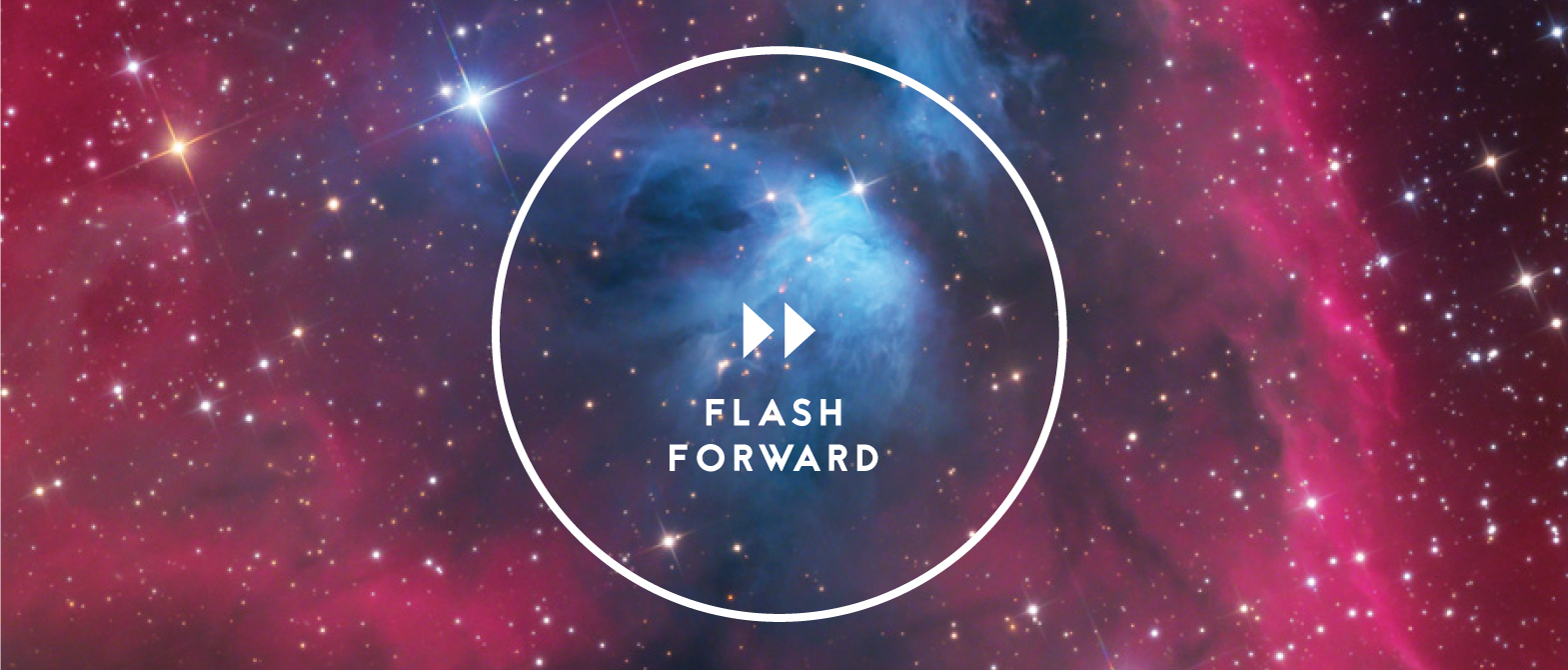
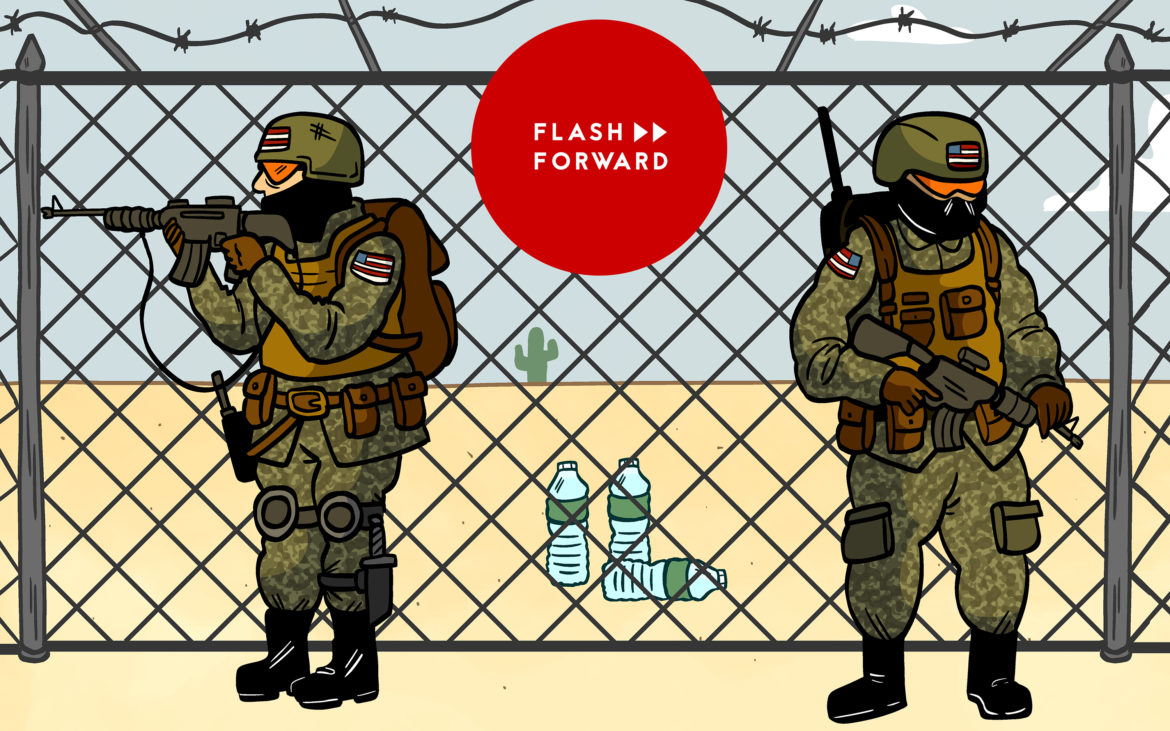
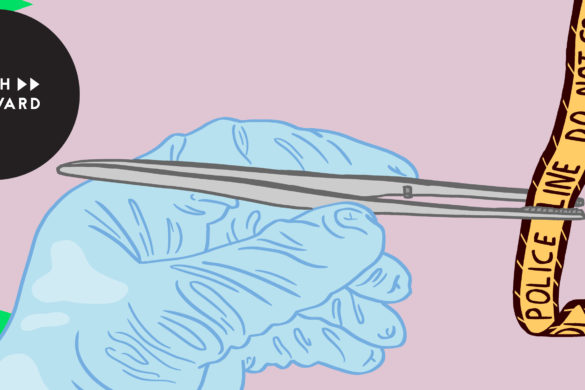
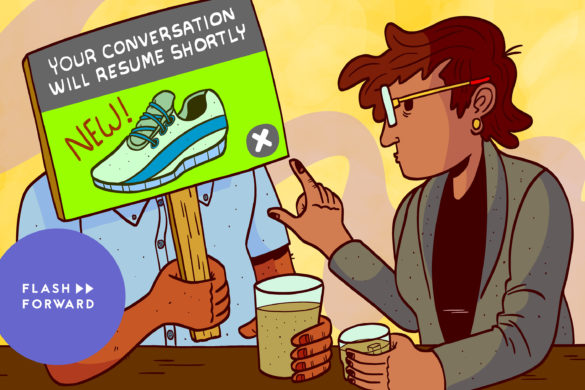
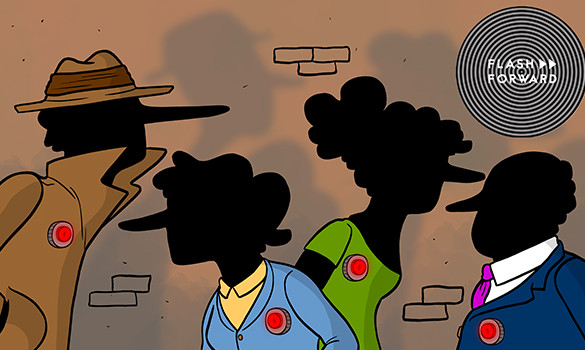
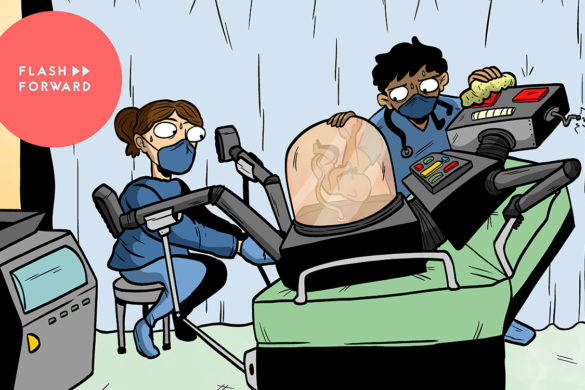
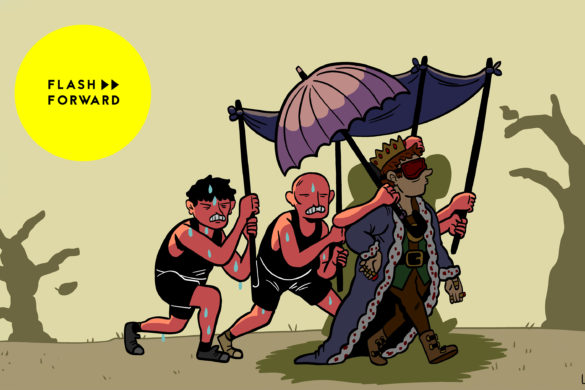
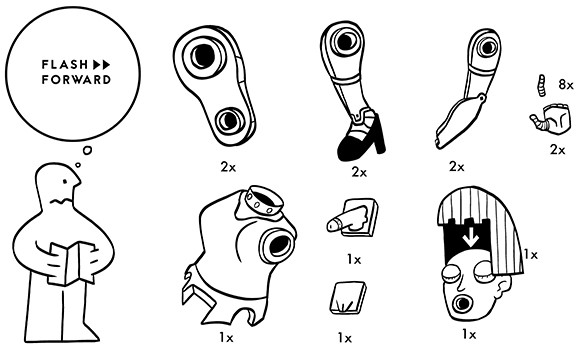

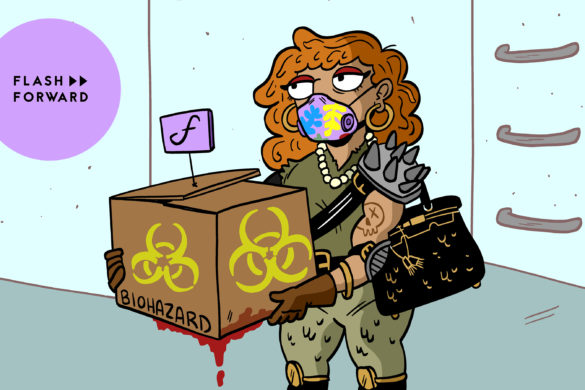
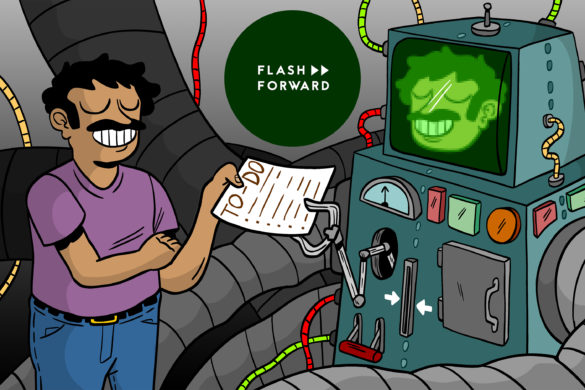
2 comments
[…] Water Would Be Nice […]
[…] United States is the worst of the last 500 years. We covered the coming water issues in the area in this episode, and this new study shows that past droughts were caused by natural variation, while this one is […]